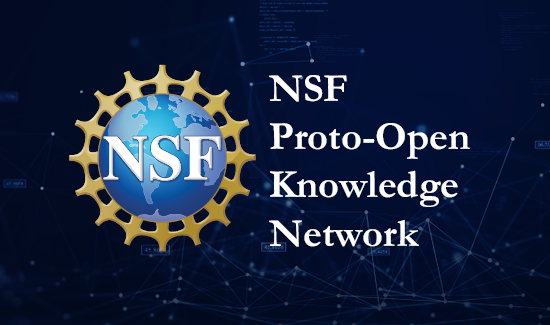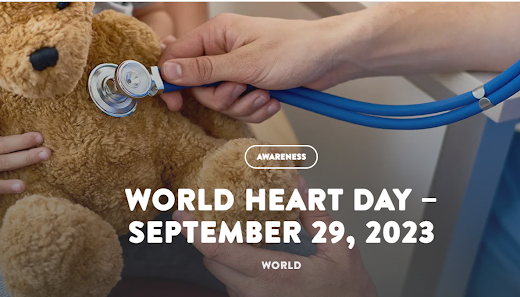3.156 AMICOR (26)
#Com Dra. Valderês Robinson Achutti (*13/06/1931 + 15/06/2021)
em Shangai 2001, depois da 5a. Conferência Internacional de Cardiologia Preventiva
#Re-Publicando artigos meus, mais antigos MEDIR A PRESSÃO OU A CINTURA?
Aloyzio Achutti. Membro da Academia sul-rio-grandense de Medicina.
(Publicado no Jornal ZH em 5 de julho de 1997)
A informação, baseada em observações científicas não tão novas, sobre o valor preditivo da simples medida da cintura, gerou notícia de primeira página em jornais de Montreal.
Durante a 4a. Conferência Mundial de Cardiologia Preventiva, no Canadá, foram apresentadas no primeiro dia observações comprovando a importância desta simples observação que não requer nenhum equipamento, bastando um simples olhar...
Em nosso Estado já foram feitos estudos sobre o assunto, mas somente agora, depois de algum tempo de maturação, como de hábito em medicina, parece que a informação científica vai passar para uma categoria de informação prática.
Quanto mais estreita a cintura, com relação aos quadris, tanto melhor o prognóstico quanto ao risco de ter doença cardiovascular.
As mulheres naturalmente sofrem menos do coração, e geralmente conservam por mais tempo uma silhueta, há muito tempo cobiçada como expressão de beleza, e agora também de saúde.
Ainda se discute muito porque uns se parecem mais com uma pêra e outros mais com uma maçã. Como em tudo, há componentes hereditários mediados por hormônios, entre os quais a insulina, modulados por hábitos e experiências de vida.
Para aqueles ou aquelas que não se enquadram no atual figurino da saúde não há que desesperar. Pelo contrario, tem até um sinal muito precoce e fácil de interpretar, a partir do qual, basta cultivar alguns bons hábitos de vida e evitar fatores de risco muito comuns (fumo, hipertensão, obesidade, excesso de gorduras e de açúcar, estresse e sedentarismo), podendo se beneficiar, mais ainda do que os demais, da decisão de levar uma vida saudável.
Estas novidades podem ter implicações adicionais: se algum cardiologista ou outro médico olhar com muita insistência ou se propuser a medir sua cintura ou seus quadris, não se considere precipitadamente vítima de assédio...
Como esta, quantas outras informações tão simples constantes da história de vida de cada um e de cada família, poderia ser tomada pelo médico, ou cada um por si mesmo, para fazer melhores opções na vida, evitando necessidade de exames e intervenções sofisticadas e caras mais tarde? Quanta informação valiosa sobre saúde devem conter as anotações dos cadernos de medidas dos costureiros e dos alfaiates?
Portanto, neste caso, vale a pena olhar para o próprio umbigo e medir a cintura, em jejum, pela manhã. Para os homens do Canadá a medida saudável em torno dos 18 anos está sendo considerada como de 83 cm, após os 55 anos de 97 cm. Para mulheres, 73 e 86 respectivamente. Não dispondo de informações para nossa população, o importante é que a medida da cintura não exceda a dos quadris!
#HMV
#Wanyce Miriam Robinson: Missa de 7o. dia.18 multidisciplinary, cross-sector teams will create knowledge graphs, connections and educational materials for a trustworthy open knowledge network In collaboration with five other U.S. government agencies, the U.S. National Science Foundation has invested $26.7 million in 18 projects through its Building the Prototype Open Knowledge Network (Proto-OKN) program. An open knowledge network is a publicly accessible, interconnected set of data repositories and associated knowledge graphs that will enable data-driven, artificial intelligence-based solutions for a broad set of societal and economic challenges./.../ |
|
#Today's Doodle 27,September 2023

Google's 25th BirthdayToday's Doodle marks Google's 25th birthday. Thank you for searching with us throughout the years.
#Dia Mundial do CoraçãoWorld Heart Day is observed and celebrated annually on September 29, with the aim of increasing awareness of cardiovascular diseases and how to control them to negate their global impact. The international holiday was established by the World Heart Federation in collaboration with the World Health Organization. The president of the World Heart Federation from 1997 to 1999, Antoni Bayés de Luna, had conceived this idea. The first celebration of the annual event took place on September 24, 2000, and, until 2011, World Heart Day was observed on the last Sunday in September.
#Aristóteles Comte de Alencar Fo.
Veio de Manaus e trouxe-me um exemplar de seu último belo livro BELEZA DECIFRADA
da Editora Valer. Companheiro de muitos projetos junto à Sociedade Brasileira de Cardiologia.
Veio do Rio de Janeiro, querida companheira da época em que eu ainda conseguia atuar na SBC
#Paulo Caramori Prata da casa, Diretor Científico do 78o. Congresso da SBC, em Porto Alegre
#CPNAS Art and science entwined: This course explores the long, interrelated history of two ways of seeing the world
Traduzir post
#  | Lane Greene
Language columnist and Spain correspondent |
|
|
If you are like me, you haven’t handwritten anything longer than a short note for many years. In modern life, writing means typing. But for a back-to-school column, I took up the subject that gave me my worst-ever grade in school: a scowling “Needs Improvement” (the worst given) in handwriting./.../
|
|
|
#Nature
Abstract
The trillions of microorganisms in the human intestine are important regulators of health, and disruptions in the gut microbial communities can cause disease. The gut, liver and immune system have a symbiotic relationship with these microorganisms. Environmental factors, such as high-fat diets and alcohol consumption, can disrupt and alter microbial communities. This dysbiosis can lead to dysfunction of the intestinal barrier, translocation of microbial components to the liver and development or progression of liver disease. Changes in metabolites produced by gut microorganisms can also contribute to liver disease. In this Review, we discuss the importance of the gut microbiota in maintenance of health and the alterations in microbial mediators that contribute to liver disease. We present strategies for modulation of the intestinal microbiota and/or their metabolites as potential treatments for liver disease.
#Academia SR de Medicina
Cancer Prevention and Early Detection
Documento enviado pelo Acadêmico Dr. Gilberto Schwartsmann por intermédio da Presidente Dr. Miriam Oliveira
|
|
|
In the Milky Way’s Stars, a History of ViolenceBy REBECCA BOYLE Our galaxy’s stars keep a record of its past. By reading those stories, astronomers are learning more about how the Milky Way came to be — and about the galaxy we live in today.
Read the article |
|
 | To Defend the Genome, These Cells Destroy Their Own DNABy DAN SAMORODNITSKY Under a microscope, cells in a worm embryo eliminated one-third of their genome — an uncompromising tactic that may combat genetic parasites.
Read the blog
Related:
Shrinking Bat DNA
and Elastic Genomes
By Ariel Bleicher (2017) |
 | How Many Microbes Does It Take to Make You Sick?By TARA C. SMITH Exposure to a virus isn’t an all-or-nothing proposition. The concept of “infectious dose” suggests ways to keep ourselves safer from harm.
Read the column
Related:
Will We Ever Get
Rid of COVID-19?
By Tara C. Smith (2021) |
|
Is It Real or Imagined? How Your Brain Tells the Difference.Article by YASEMIN SAPLAKOGLU;
Podcast hosted by SUSAN VALOT A recent neuroscience study reveals how human brains differentiate between the imagined and the observed.
Listen to the podcast
Read the article |
|
|
Flexing Nitrogen
The short-lived, unbound nucleus of nitrogen-9, containing seven protons and two neutrons, has been produced and studied for the first time, reports Adrian Cho for Science Magazine. Studying unbound and weakly bound nuclei teaches us about nuclear theory in new, understudied regimes of physics. In June, Katie McCormick wrote for Quanta about the recent measurement of an excited state of the helium-4 nucleus.
Enough Time
The march of time is inexorable, but its rate of passage depends on the observer. For WIRED, KC Cole writes about the physics of time and the life lessons it has taught her. Humans’ relationship with time has changed over the millennia. In 2020, Dan Falk, Eleanor Lutz and Olena Shmahalo created a graphic for Quanta tracing how our ideas about time evolved as science progressed. |
|
|



























No comments:
Post a Comment